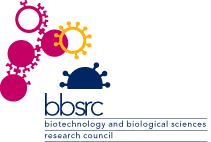 |
Structure-Based Drug Discovery
|
 |
Course Tutors & Scientific AdvisorsTutors :The course will be delivered by scientists who have considerable experience in the development and application of the methods in both large and small pharmaceutical companies.
Advisors :The course content and organisation is overseen by a Scientific Advisory Panel, consisting of :
Dave BrownBen DavisBen studied protein folding by NMR for his PhD with Professor Alan Fersht at Cambridge, before moving to Dr Paul Driscoll's group at University College London. At UCL he used NMR to probe protein/ligand interactions of domains of PI-3 kinase. In 1998 he joined RiboTargets, a biotech company spun out of the Laboratory of Molecular Biology in Cambridge and developed methods for probing ligand binding to RNA targets, such as the 30S ribosome. For the past five years, he has led the team that implemented fragment-based discovery methods and applied them to a wide range of protein targets. During this time, the company has evolved into Vernalis, a small pharamaceutical company with products and a portfolio at various stages of clinical trials. This now includes clinical candidates that have developed from the fragment based techniques. Martin DrysdaleMike HannRod HubbardApart from brief sabbaticals at Harvard, Rod's academic career has been spent at the University of York. During the 1980s he was a pioneer in the development of molecular graphics and modelling systems for studying protein structure (HYDRA and QUANTA) that still remain in use today. In the 1990s, he helped to build (and directed) the Structural Biology Laboratory at York as a major centre, with over 80 scientists studying the structure and function of proteins. For the past fifteen years, his personal research interests have focussed on understanding the relationships between structure, mechanism and function in various protein systems (including proteases, nuclear receptors and kinases) and experimental and theoretical studies of protein-ligand interactions. Since 2001, he has spent some of his time at Vernalis, where he has helped establish and apply structure-based drug discovery methods. He is a consultant to a number of pharmaceutical and technology companies and is also Chairman of the Biomolecular Sciences committee of the BBSRC. Stefan SengerStefan has a chemistry background and a PhD in Physical Organic Chemistry which he acquired at the Justus-Liebig-University in Giessen, Germany. After a postdoc in computational chemistry in Leo Radom's group at the Research School of Chemistry in Canberra, Australia, Stefan moved to the UK in 1999 to take up a position as computational chemist in GlaxoWellcome (now GlaxoSmithKline). In his 7 years as computational chemist in the pharmaceutical industry he has contributed to a variety of lead generation and optimisation programmes, ranging from proteases to ion channels. Stefan has a keen interest in teaching and has been involved in running several GSK-internal workshops for Medicinal Chemists as well as giving lectures to university students. | ||
